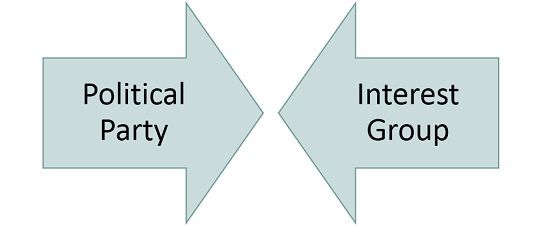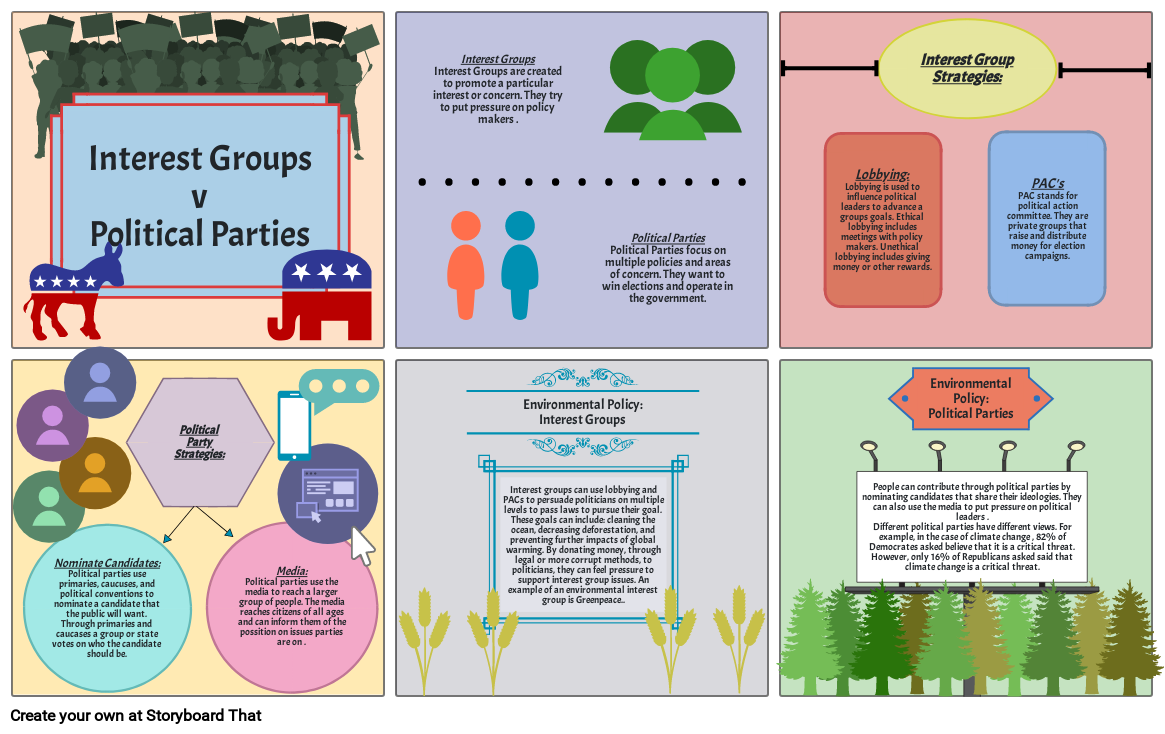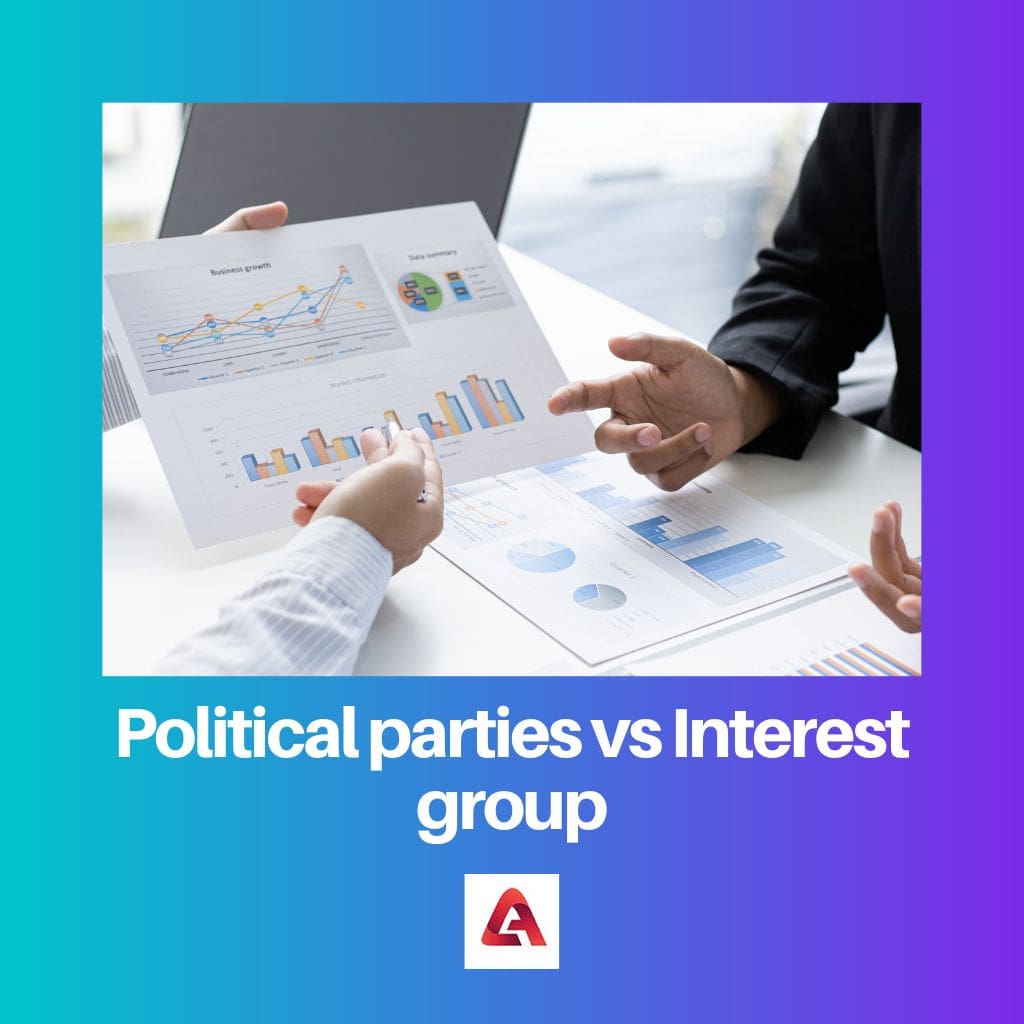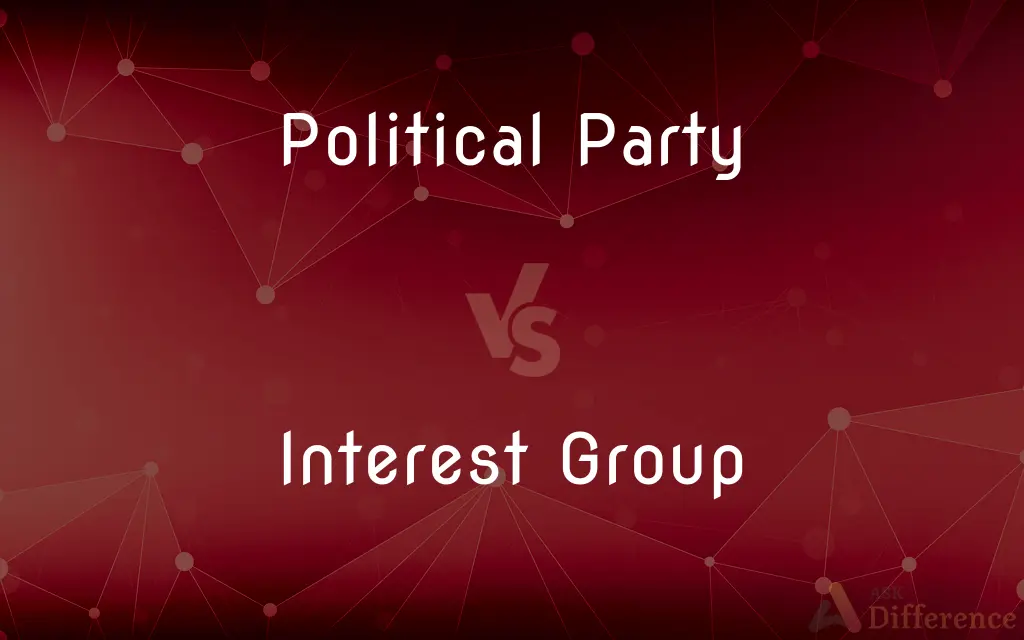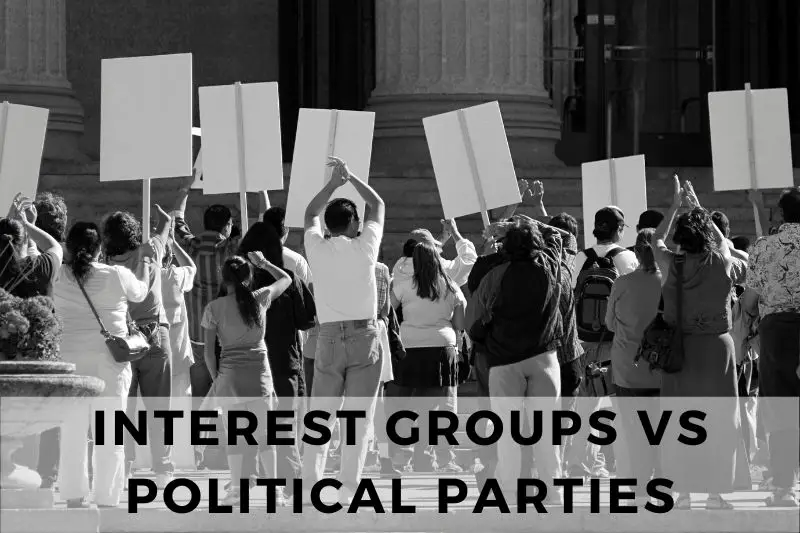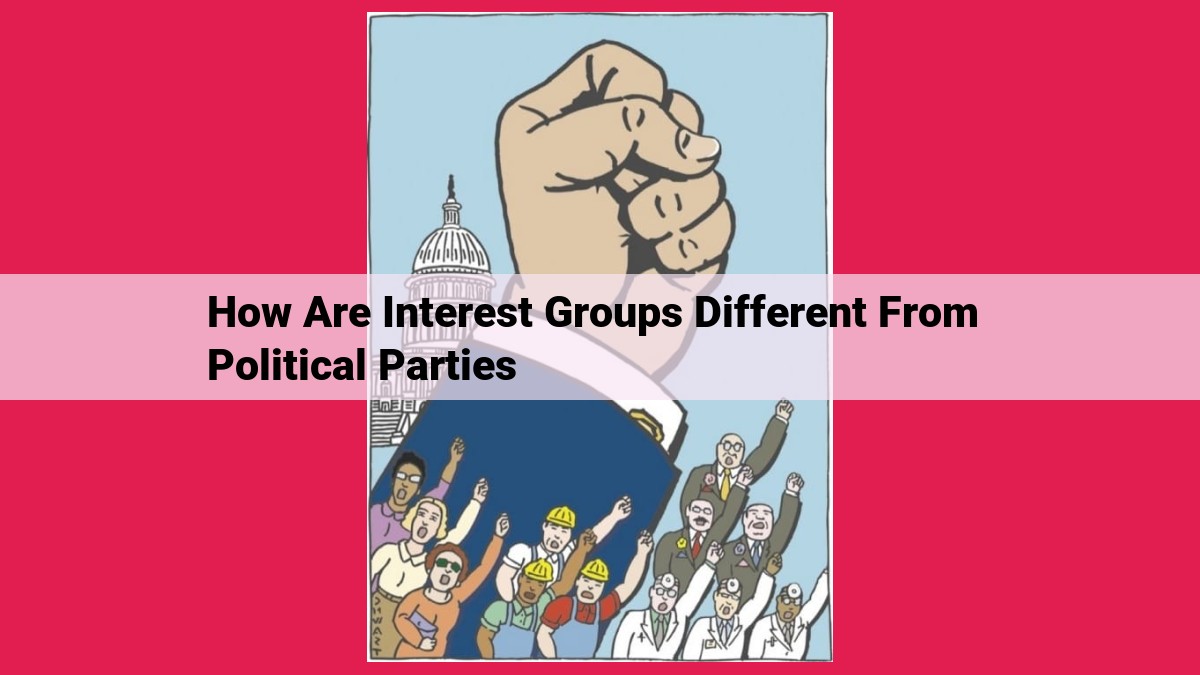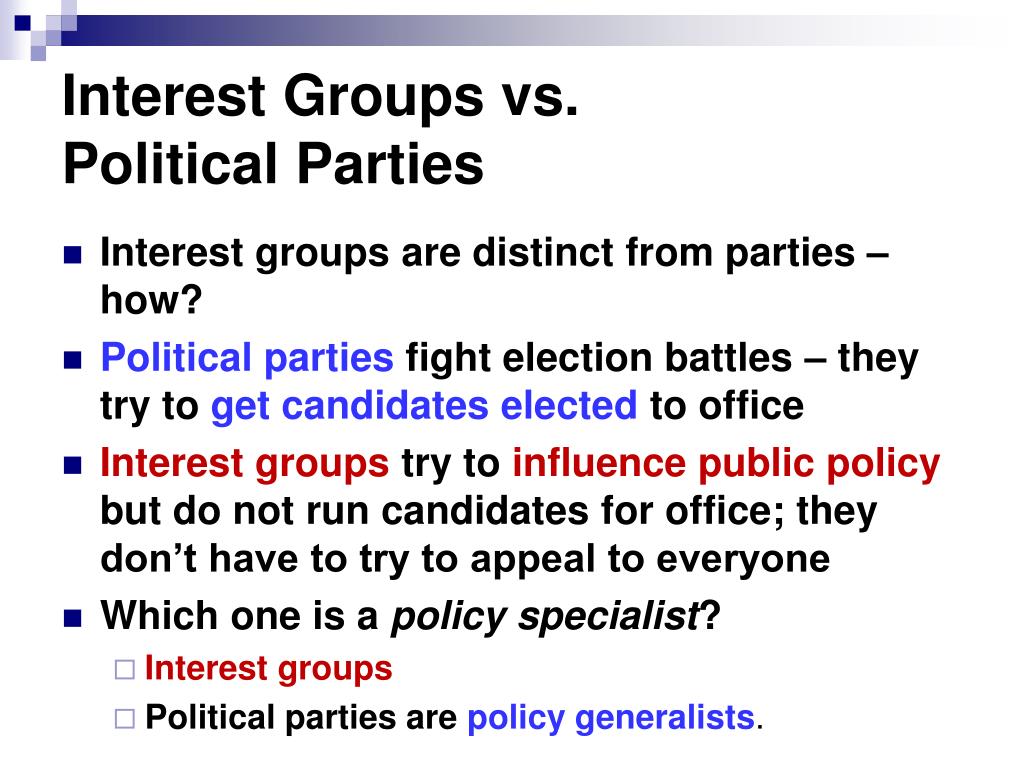A Political Party Differs From An Interest Group In That

The air crackled with anticipation at the town hall meeting. Local residents, a diverse tapestry of faces, buzzed with conversation, their voices a low hum against the backdrop of campaign posters. A heated debate was brewing, not just between candidates, but about the very nature of influence in their community. They argued the difference between rallying behind a cause and aligning with a political machine.
At the heart of this debate lies a fundamental question: what truly separates a political party from an interest group? This distinction, though often blurred in the heat of political discourse, is crucial for understanding how power operates and how citizens can effectively engage in the democratic process. Political parties seek to control the government by winning elections, while interest groups aim to influence government policy without necessarily seeking to hold office.
A Tale of Two Agendas: Defining the Core Difference
To understand the difference, we need to examine the aims and scope of each entity. Political parties, like the Democrats and Republicans in the US, possess broad platforms encompassing a wide range of issues. These platforms act as manifestos, outlining their vision for the country and attracting voters with diverse concerns.
In contrast, interest groups, such as the National Rifle Association (NRA) or the Sierra Club, focus on specific issues relevant to their members. They may advocate for gun rights, environmental protection, or any other cause that unites their constituents.
This narrow focus allows them to develop specialized knowledge and exert concentrated pressure on policymakers. It's a targeted approach, designed to shape policy within a defined domain.
The Path to Power: Elections vs. Influence
The primary objective of a political party is to win elections. They nominate candidates, run campaigns, and mobilize voters to achieve control of government positions, from local school boards to the presidency. Victory means the power to implement their platform and shape the direction of the nation.
Interest groups operate differently. They seek to influence those in power, regardless of which party holds office. Their strategies include lobbying, public awareness campaigns, and even legal challenges.
Lobbying is a key tool, involving direct communication with lawmakers to advocate for or against specific legislation. They can also contribute financially to campaigns through Political Action Committees (PACs) to support candidates favorable to their cause.
The Breadth of Appeal: Building Coalitions
Political parties need to appeal to a broad spectrum of voters to win elections. Building coalitions is essential, requiring compromise and the incorporation of diverse perspectives into their platform. This pursuit of majority support often necessitates moderating extreme positions.
Interest groups, with their narrow focus, can afford to be more ideologically rigid. They prioritize the interests of their members, even if it means alienating potential allies. This focused advocacy can be highly effective in shaping policy on specific issues.
Consider the example of labor unions. They advocate for workers' rights, and while they may align with a particular party (often the Democratic Party), their primary goal is to improve the working conditions and wages of their members, irrespective of the political affiliation of the lawmakers in power.
Checks and Balances: The Role of Advocacy in Democracy
Both political parties and interest groups play vital roles in a healthy democracy. Political parties offer voters a clear choice between competing visions for the country. They aggregate diverse interests into cohesive platforms, providing a framework for governance.
Interest groups, on the other hand, ensure that specific concerns are heard and addressed by policymakers. They provide valuable expertise and represent the interests of often marginalized groups.
According to the Center for Responsive Politics, lobbying expenditures in the US routinely reach billions of dollars annually, demonstrating the significant influence of interest groups on government decision-making. This level of engagement underscores their importance in the political landscape.
Potential Pitfalls: The Shadow Side of Influence
While both entities contribute to the democratic process, they also present potential challenges. Political parties can become overly focused on winning elections, sometimes at the expense of principle. This can lead to polarization and gridlock.
Interest groups can exert undue influence on policy, particularly if they are well-funded and lack transparency. "Capture theory" suggests that regulatory agencies can become beholden to the industries they are supposed to oversee, leading to policies that benefit the industry at the expense of the public.
The crucial element is transparency. Voters need to understand who is influencing their elected officials and how. Disclosure laws and campaign finance regulations are designed to shed light on these connections and promote accountability.
Engaging in the Process: A Citizen's Perspective
For citizens, understanding the difference between political parties and interest groups is essential for effective civic engagement. Joining a political party can offer a direct path to shaping the future of government.
Supporting an interest group allows individuals to advocate for specific causes they care about. Both forms of engagement are valuable and contribute to a vibrant democracy.
The most important thing is to be informed. Research the platforms of political parties and the agendas of interest groups. Understand their sources of funding and their track record on the issues that matter to you.
The Enduring Debate: Power and Representation
Back at the town hall meeting, the debate continued. While the specific points of contention varied, the underlying theme remained consistent: how do we ensure that all voices are heard and that power is exercised responsibly?
The answer, it seems, lies in a combination of informed participation, vigilant oversight, and a commitment to transparency. Only by understanding the roles and limitations of both political parties and interest groups can citizens effectively navigate the complex landscape of modern democracy.
Ultimately, the tension between the broad ambitions of political parties and the focused advocacy of interest groups is a dynamic force, shaping the political landscape and driving the ongoing quest for a more just and representative society. This is a fundamental element of democratic participation.
